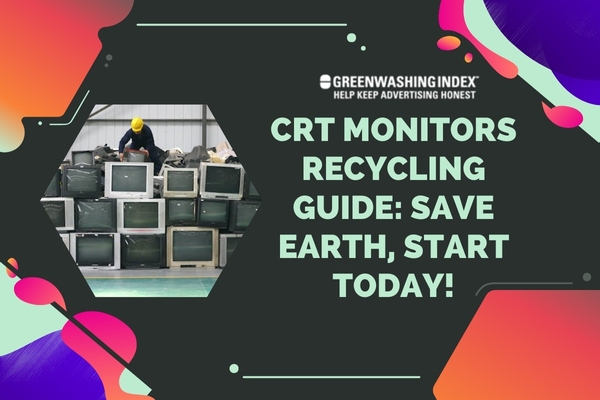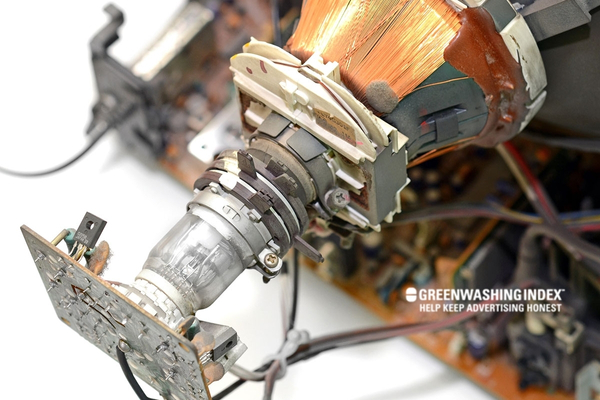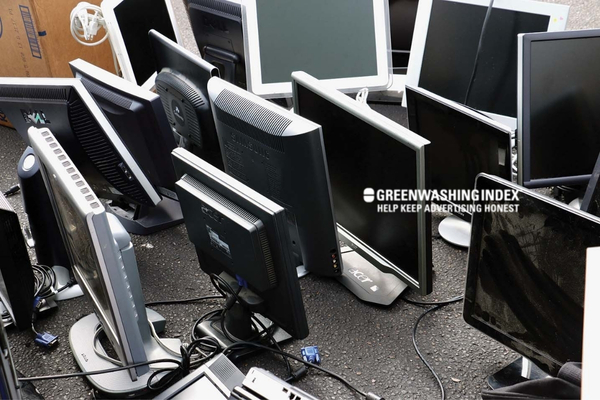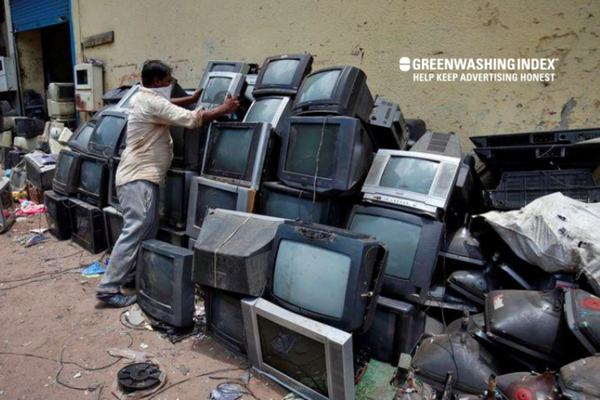

Have you ever wondered what happens to those bulky old monitors once they’re out of sight? I’m talking about the chunky ones from the past – CRT monitors. These monitors are not just taking up space in our attics, but when tossed away, they could be very harmful to our environment. That’s why “CRT monitors recycling” is not just a phrase; it’s a call to action for all of us who care about our planet’s future.
When we talk about recycling our old CRT monitors, we’re looking at a process that turns potential harm into sustainable practice. Imagine tackling e-waste in a way that saves precious resources and prevents hazardous materials from polluting the earth.
That’s exactly what recycling these electronic relics accomplishes. It ensures toxic substances like lead and phosphorous don’t end up poisoning landfills but instead get treated responsibly.
What You Will Discover Here:
When we look at an old CRT monitor, it’s not just a piece of outdated tech; it’s a call to action for the safety and health of our environment. Recycling these monitors is essential, and I’m here to share why this step is crucial.

I can’t stress enough how important it is to recycle CRT monitors. Maybe you’re wondering, “What’s the big deal with these old screens?” Let me tell you, it’s a really big deal for our planet.
First off, CRT stands for Cathode Ray Tube. These old-style monitors were all the rage before flat screens took over. But now they’re mostly just junk. The problem is that these chunky monitors have some nasty stuff inside them, like lead and other harmful chemicals.
If we just throw them out, guess where they end up? Yep, in landfills or, worse, dumped in places where they shouldn’t be. Here’s the scary part: when it rains or gets windy, those harmful chemicals can leak out into the ground or air. This means bad news for the soil and water around us because the toxins can get into crops and drinking water. Animals might eat plants with this stuff in them, too, and get sick.
But here’s the real kicker – lead is super dangerous to people as well. We’re talking about serious health problems like brain damage or other issues if kids or adults are around too much of it.
So recycling these bulky beasts of screens isn’t just good; it’s vital to keep our environment clean and healthy.
When I talk about e-waste management, I mean how we handle all electronic junk, which includes recycling CRT monitors right at the top of that list.
In simple words, managing e-waste better makes sure we mess up Earth a lot less than if we didn’t care at all about where our used electronics go after they’re done entertaining us.
So next time you see one of those hefty old CRT monitors sitting by someone’s trash? Think twice about what happens when something so small gets tossed without a thought for its impact on everyone’s home – our very own planet, Earth.
Also Read: Glass Recycling Uncovered: Endless Lifespan Explained!
Recycling CRT monitors is not just about throwing old screens into a bin. It’s a careful process. This process helps protect our planet by taking these old TVs and computer screens apart. We do this so that they don’t harm the environment.

CRT monitor recycling is when we take these old, bulky monitors – maybe you’ve seen them in the past at your grandparent’s house or gathering dust in a garage – and break them down properly. These monitors can’t be thrown away like regular trash because they have bad stuff inside that can hurt our Earth.
When we recycle these monitors, we save useful parts that can be used again. This could be glass, plastic, or metal pieces. By doing this, we make sure less garbage goes into landfills, which helps keep our soil and water clean.
Plus, recycling these monitors means fewer new resources are needed to build new things. This saves energy and cuts down on mining or making plastic from scratch, which is really good for protecting nature.
Think of CRT monitors recycling as giving these old tech pieces a second life while also being kind to our planet!
A typical CRT monitor has a bunch of different bits inside:
Now, here comes the serious part: some elements are not nice stuff
When people talk about e-waste management and sustainable practices, one main goal is to keep hazardous materials from hurting us or animals by staying out of landfills.
That’s why when we recycle CRT monitors, special attention goes to handling these dangerous parts correctly so they don’t mess with Mother Nature! Illustrating how caring for even an outdated piece of electronics through proper recycling can hugely reduce environmental impact makes all this effort worth it!
Also Read: Paper Bags Recycle: A Must-Know Sustainability Guide
When I think about the journey of recycling CRT monitors, it all starts with gathering them correctly. This part is very important because if we don’t collect these old screens the right way, we might not be able to recycle them as well as we should. So here is why the proper collection is so crucial.
CRT monitors have stuff inside them that can be bad for the environment. This includes things like lead and other materials that shouldn’t end up in our soil or water. Here’s what happens when we collect these monitors in an organized way:
Because of these reasons, it’s clear that collecting CRT monitors properly makes a big difference for successful recycling.
After collecting all these old screens comes another important step: moving them safely to where they’ll be recycled. Let me tell you why this is so critical:
CRTs are quite fragile – remember how easily an old TV or computer screen could get damaged? Well, when they break, hazardous substances can leak out. That’s something no one wants! Here are some steps taken during transportation:
Moving these delicate items carefully ensures that potential pollutants stay locked in until experts at recycling facilities can deal with them appropriately without harming our planet.
Every single step here plays a big part in keeping both people and Earth safer from unwanted pollution caused by electronics like CRT monitors left unrecycled!
Also Read: Eco-Friendly Kitchen: 10 Green Living Tips You Can’t Ignore!
Recycling CRT monitors is a step-by-step journey that transforms what is used to show our favorite games and websites into parts for new products. Let’s break down the stages.

When I get a CRT monitor ready for recycling, it’s like doing surgery. Every piece must be treated with care. Here’s how I would usually break it down:
Each of these steps needs patience and precision—just ripping things apart isn’t an option if you want to do this right and take care of our planet while at it!
When I think about CRT monitors recycling, I know there are dangerous elements inside these old screens. This is why removing them safely is so important. Here’s what I’ve learned about how this works:

Now, to make sure that harmful stuff like lead or phosphor doesn’t hurt anyone, there’s a special way to take them out from the CRT monitors. Let me explain this method to you in simple steps.
So when you put all those pieces together, take them apart safely + separate bad stuff carefully clean, and no harm is done while recycling! That’s how professionals manage CRT monitors’ recycling without letting any dangerous element cause trouble for us or our planet!
Also Read: Exploring Magazine Recycling: Journey Towards Sustainability
When it comes to recycling CRT monitors, it’s important to do it in a way that is good for our planet. This means using methods that don’t harm the earth. So, how do we recycle these old monitors without hurting the environment? I’ll tell you about some green ways that are used at each step of the recycling process.
In every step above, it’s super important to use less energy and create less waste so we protect our environment dearly.
By following through with eco-friendly methods during CRT monitor recycling processes—from collecting them up until their components find new life—we reduce environmental impact significantly, which ultimately preserves our planet’s health for future generations coming after us!
Recycling old CRT monitors is not just an idea; it’s an action many people around the world are taking to help our environment. I’ve heard about many cases that show how we can do good for our planet. In this bit, I’ll share some real-life successful stories from different parts of the world related to old monitor recycling.

In Japan, they take recycling seriously and have laws that make sure electronic waste gets handled right. The country has a system where they collect old CRT monitors and other electronics and safely break them down. They sort out harmful stuff like lead and make sure it doesn’t harm the earth. Because of this smart system, Japan recycles a huge part of its e-waste every year.
Over in Sweden, there’s a program that teaches kids and adults how to recycle electronics, including CRT monitors. They show everyone why it’s important and how to do it properly. Thanks to these lessons, lots of CRT monitors find new life instead of hurting our landfills.
In California, USA, they’ve got places called e-waste centers where you can take your old gadgets, including CRT monitors, for recycling. They use high-tech ways to carefully take the monitors apart so that almost every piece can be used again or disposed of without hurting nature.
India is home to E-Parisaraa – its first electronic waste recycler that follows all environmental rules strictly when handling things like CRT monitors, which can be really bad for nature if not treated well in their end days. E-Parisaraa makes sure dangerous materials are separated carefully from what can be reused.
In Belgium, we have UMICORE – a world leader who responsibly takes apart electronic waste like CRTs to extract precious metals while keeping the environment safe at the same time!
Each one of these examples shows us how doing something like recycling old CRT monitors is not just important but very much possible when done with care and thought everywhere around our globe!
When you recycle your old monitor, you help prevent harmful chemicals from hurting the environment. This choice also saves useful parts that can be made into new things.
Many electronics like TVs, computers, and phones can go through a recycling process similar to that of monitors. They all can find new life after recycling.
Mostly, yes. A lot of parts within a monitor can either be recycled or used again. Rarely, something might not fit for this, but it’s not common.
Recycling CRT monitors stands as a beacon of sustainable practice in the rising tide of electronic waste. As an essential part of e-waste management, it harnesses the power of environmental responsibility, converting potential hazards into reusable materials. Through meticulous dismantling and careful extraction of dangerous elements, CRT monitors recycling, which not only protects the environment but also underlines the importance of adopting eco-friendly techniques at each stage.
Key Takeaway Points:
